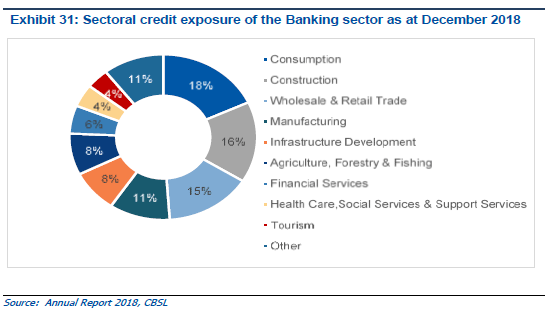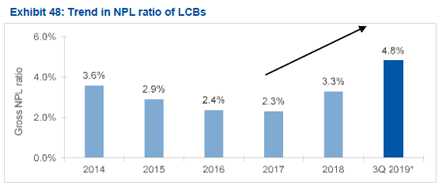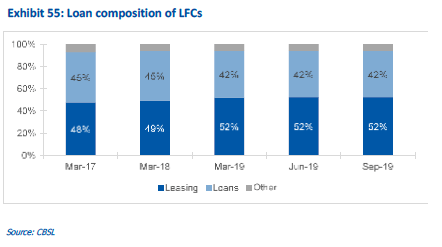Alpen Capital (ME) Limited, Dubai-headquartered investment banking advisory firm, announced the publication of its latest report titled ‘Sri Lankan Banking and NBFI Sector’. This report provides a comprehensive overview of the Sri Lankan Banking and Non-Banking Financial Institutions (NBFI) sectors, highlighting the strengths, opportunities and challenges for a diverse group of investors (investment funds, corporate institutions, etc.) looking for investment opportunities in Sri Lanka. It also profiles some of the key firms within these sectors.
“Alpen Capital forayed into Sri Lanka in 2015 and since then witnessed remarkable success, in both of its equity and debt advisory services, arranging more than USD 500M of bilateral loans, club loans and syndications for banks and finance companies as well as advising clients on regional cross border mergers and acquisitions. We continue to believe in the tremendous growth potential of the country and anticipate immense opportunities for investors.” Rohit Walia, Executive Chairman, Alpen Capital
“The Central Bank of Sri Lanka is closely monitoring the Banking and NBFI sector by adopting international regulatory standards, which has increased investors' confidence in these sectors. Highly professional individuals who manage the Banks and top tier NBFIs have ably led the sector through challenging times and successfully fulfilled the expectations of the investors. We expect the outlook of these sectors to improve and through this report intend to showcase them." Dilip Samanthilaka, Senior Director, Alpen Capital
Sri Lanka’s economic growth which has seen a slowdown in recent years due to external factors is expected to improve as a result of easing of monetary policy by the Central Bank as well as fiscal expansion. IMF has projected real GDP growth to strengthen to 3.5% in 2020.
External vulnerabilities in meeting large external debt service payments have been foremost among Sri Lanka’s economic challenges. Despite the downgrade in sovereign ratings, Sri Lanka has retained the ability to raise sovereign bonds and raised them twice in 2019, with both bond issuances being healthily oversubscribed. Sri Lanka has managed to maintain inflows of around US$ 1-2bn over the last few years.
The country retained stable fundamentals despite economic challenges in the recent past. Growth was driven by an increasingly important services sector and achieved relatively high levels of GDP per capita.
Banking Sector
Licensed Commercial Banks (LCBs), which represent a major component of the banking system, had a total asset base of US$ 58bn and asset share of 87.6% as at September 2019.

In 2019, Year-on-Year (YoY) growth in credit to the private sector decelerated significantly to 4.4% from 16.2% in the previous year. However, lending rates at financial institutions remained at an elevated level over the period. To tackle this, the CBSL has taken action by reducing policy rates and imposing a cap on bank lending rates in September 2019. As a result of CBSL’s action as well as the government stimulus measures, the CBSL expects credit growth to gradually recover in 2020.

As at end 2018, consumption, construction and trading sectors held the largest shares of loans from the banking sector. Amidst rise in NPLs in the sector, the construction sector reported a decline in credit growth along with the tourism and financial services sectors, while credit growth in other main sectors increased.
The CBSL has initiated drafting a new Banking Act to be enacted in 2021. The Act will look into areas of strengthening the governance of banks as well as regulations related to digitalization of the sector. The sector has adopted internationally accepted BASEL III regulatory framework and SLFRS 9 - the Sri Lankan equivalent of IFRS 9, pertaining to the accounting of loan losses. These measures will enhance the resilience against headwinds in the future.
The Banking sector has immense growth opportunities in different segments. Amongst them is the adoption of technology to provide digital financial services to their customers as well as attract a strong client base. A high yielding SME segment presents diversification opportunities which can be a lucrative market for the sector. Additionally, as the valuations of the Banking sector are currently low, it presents an attractive buying opportunity for investors, which would support banks in accumulating more capital.
Challenges
Rising Non-Performing Loans (NPLs) and impairment costs have eroded profits in 2019: Sluggish economic growth, lackluster weather conditions in the form of droughts and floods during 2016 and 2017, political crises in late 2018, Easter Sunday attacks and slowdown in the construction and SME sectors, resulted in the gradual increase in NPL ratios from 2018. However, NPLs still remain much lower than some of Sri Lanka’s regional peers including Pakistan, Bangladesh and India.

Capital raising to meet regulatory requirements has proven to be challenging: Banks currently need much stronger capital buffers over the minimum ratios stipulated by the BASEL III international standard and additional directives by the CBSL.
Lending rate caps are likely to exert pressure on margins: The recently announced caps on lending rates to drive credit growth within the economy could drive down interest margins of the industry in the medium term.
Catering to evolving customer needs and cyber security risks pose a challenge amid the drive to adopt new technology: With increasing adoption of technology, banks need to keep up with the needs of their customers and hiring the right talent has become crucial.
NBFI Sector
The NBFI sector consists of Licensed Finance Companies (LFCs) which accept customer deposits and provide leasing, loans and other financial services as well as Specialized Leasing Companies (SLCs) that have a narrower range of activities and are not permitted to accept public deposits.
NBFIs rely on a mix of deposits from the public and borrowings, primarily from commercial banks, for their funding requirements. LFCs are predominately funded by customer deposits, with deposits accounting for 67% of the total funding mix. Several LFCs have been able to raise funds from multilateral and unilateral agencies in the past.

Key activities of the LFCs include Leasing, Gold-backed lending, Microfinance and SME lending. They broadly tend to focus on retail financial services and cater more to SME businesses, while having a greater presence in rural areas.
In 2018/19 a combination of high tariffs, high depreciations and adverse macroeconomic conditions have led to sharp drop in vehicle imports and microfinance activity, which has led to a sharp reduction in loan growth.

The NBFI sectors growth potential lies in adopting technology which will help them improve customer service and reduce operational costs in the long term. Owing to a large number of NBFIs, the sector is expected to witness consolidation in the face of rising minimum capital requirements, low profitability and to reduce cost inefficiencies. The efforts taken by the CBSL to regulate microfinance activities by imposing tighter regulations on having a stronger capital base is expected to instill stability in the NBFI sector.
Challenges
Increase in Non-Performing Loans exerts pressure on performance of LFCs: Subdued economic conditions, erratic weather patterns and the debt moratorium offered to the tourism sector are all factors to keep a close eye on as they exert additional pressure on the rising NPLs of the industry.
LFCs non-compliant with minimum capital requirements may face the scrutiny of the CBSL: With both banks and LFCs looking to raise substantial sums of capital in the market, it becomes increasingly difficult to attract sufficient capital to meet and sustain capital adequacy requirements.

Possible restrictions on the importation of motor vehicles can curtail the ability to grow the leasing portfolio: Vehicle leasing is the largest lending category of the majority of LFCs in Sri Lanka. Any limitations on vehicle imports as well as on lending activities for vehicle purchases has a negative impact on the industry.
High competition within and outside the sector affecting profitability: With around 42 LFCs serving a population of ~21 M the competitiveness among the firms is very high and beyond the optimum level of competition suitable for the sector.
Please click here to access Alpen Capital’s latest report on the Sri Lankan Banking and NBFI Sector.
 Back
Back